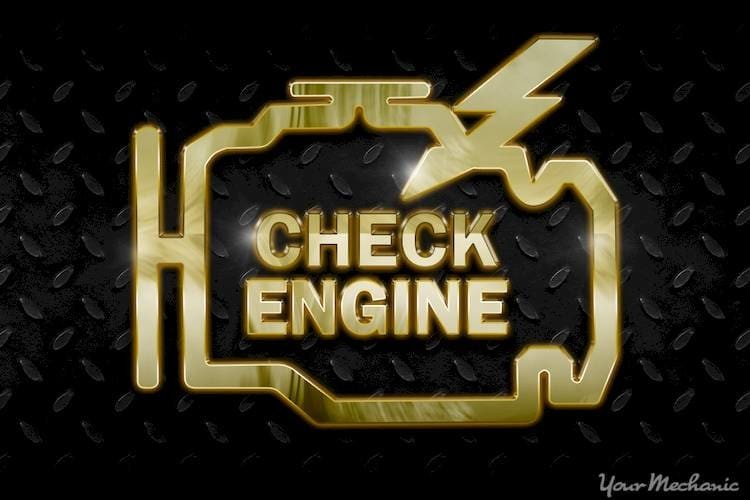The error code P0333 is a diagnostic trouble code (DTC) that can be triggered in vehicles equipped with an On-Board Diagnostics II (OBDII) system, and in European vehicles, the European On-Board Diagnostics (EOBD) system. This code specifically relates to a malfunction in the knock sensor circuit, indicating a Knock Sensor 1 Circuit High Input (Bank 2). When your car’s computer, often referred to as the Engine Control Unit (ECU) or Powertrain Control Module (PCM), detects an abnormally high voltage signal from the knock sensor circuit for cylinder bank 2, it will log the P0333 error code.
This article, created for autelfrance.com users seeking expert automotive repair information, will delve into the intricacies of the P0333 error code, providing a comprehensive understanding of its meaning, potential causes, symptoms, diagnostic procedures, and repair solutions. We aim to equip you with the knowledge necessary to address this issue effectively, ensuring optimal vehicle performance.
Decoding the P0333 Error Code: Knock Sensor Circuit High Input
The primary function of a knock sensor is to detect engine knocking or detonation. Knocking is an abnormal combustion process that occurs when the air-fuel mixture in the cylinder ignites in an uncontrolled and uneven manner. This can be caused by various factors, including incorrect ignition timing, lean air-fuel mixtures, or high cylinder temperatures. If left unaddressed, engine knocking can lead to significant engine damage.
The knock sensor is essentially a piezoelectric sensor that produces a voltage signal when it detects engine vibrations associated with knocking. This signal is then sent to the ECU. The ECU uses this information to adjust ignition timing and fuel delivery in real-time to prevent engine knock and protect the engine.
When the P0333 code is set, it signifies that the ECU is receiving a voltage signal from the knock sensor circuit on bank 2 that is higher than the manufacturer-specified range. Bank 2 refers to the bank of cylinders opposite to bank 1, which is typically the bank containing cylinder number 1. A consistently high voltage reading can indicate a fault within the sensor itself, the wiring, or the ECU’s interpretation of the signal. It’s important to note that while a minor fluctuation might not trigger the code immediately, a persistent deviation, often around 10% above the normal range, will eventually cause the ECU to store the P0333 error.
 Check Engine Light illuminated on a car dashboard, a common symptom of EOBD/OBDII error P0333 related to knock sensor issues.
Check Engine Light illuminated on a car dashboard, a common symptom of EOBD/OBDII error P0333 related to knock sensor issues.
Potential Causes of the P0333 Error Code
Several factors can contribute to the triggering of the P0333 error code. Pinpointing the exact cause is crucial for effective repair. Here are the most common culprits:
- Faulty Knock Sensor: This is a prime suspect. The knock sensor itself may have failed internally, leading to an inaccurate or excessively high voltage signal. This failure can occur due to age, physical damage, or exposure to extreme engine temperatures. Even when the engine is running smoothly without noticeable knocking, a faulty sensor can still generate an erroneous high input signal.
- Corroded or Damaged Connectors: The electrical connectors associated with the knock sensor circuit are exposed to harsh under-hood conditions, including moisture, heat, and vibrations. Corrosion or physical damage to these connectors can increase resistance in the circuit, leading to voltage irregularities and potentially triggering a P0333 code.
- Wiring Harness Issues: The wiring that connects the knock sensor to the ECU is also susceptible to damage. Frayed, shorted, or open wires can disrupt the signal transmission and cause the ECU to interpret the signal incorrectly, resulting in the P0333 error. Rodent damage or accidental damage during maintenance are common causes of wiring issues.
- Damage During Starter Replacement: In some vehicle models, the knock sensor is located in close proximity to the starter motor. During a starter replacement procedure, there’s a risk of accidentally damaging the knock sensor or its wiring. If the P0333 code appears shortly after a starter replacement, this possibility should be investigated.
- ECU Malfunction (Less Common): While less frequent, a fault within the ECU itself can also lead to misinterpretation of the knock sensor signal or incorrect voltage readings. However, ECU issues are typically diagnosed after ruling out other more common causes.
Symptoms Associated with the P0333 Error Code
The presence of a P0333 code can manifest in various symptoms, alerting the driver to a potential engine management issue. These symptoms can range in severity and may include:
- Illuminated Check Engine Light: This is the most common and immediate symptom. The malfunction indicator lamp (MIL), commonly known as the Check Engine Light, will illuminate on the dashboard to indicate that the ECU has detected a problem and stored a DTC. The light may be constantly on, intermittently flashing, or turn off and on at different times depending on the nature of the fault and driving conditions.
- Reduced Engine Performance/Lack of Power: In some cases, the ECU may enter a “limp mode” or reduce engine power as a precautionary measure when a knock sensor issue is detected. This is to prevent potential engine damage from undetected knocking. You might notice a decrease in acceleration performance, engine sluggishness, or a general lack of power, especially during acceleration.
- Engine Knocking or Detonation: While the knock sensor is supposed to prevent knocking, in some instances, you might actually hear engine knocking sounds, particularly under load or during acceleration. This is because the faulty knock sensor may not be accurately reporting engine knock to the ECU, or the ECU’s corrective actions are insufficient.
- Audible Engine Noise: Besides knocking, you might notice other unusual engine noises, which can be related to abnormal combustion or the ECU’s attempts to compensate for the perceived knock sensor issue.
Diagnosing the P0333 Error Code: A Step-by-Step Approach
A systematic diagnostic approach is crucial for accurately identifying the root cause of the P0333 error code. A qualified mechanic will typically follow these steps:
- Initial OBDII Scan: The first step involves connecting an OBDII scanner to the vehicle’s diagnostic port. This allows the mechanic to read all stored DTCs, including the P0333 code, and any other related codes.
- Code Verification and Test Drive: After noting down the codes, the mechanic will typically clear the codes and perform a test drive under various driving conditions to see if the P0333 code, and any associated symptoms, reappear. This helps verify the code’s consistency and assess the vehicle’s performance.
- Inspect for Other DTCs: It’s essential to check for other DTCs present alongside the P0333 code. If other engine-related codes are present, especially those related to fuel mixture, ignition timing, or misfires, these should be investigated and addressed first. The P0333 code can sometimes be a consequence of other underlying engine problems.
- Visual Inspection of Wiring and Connectors: A thorough visual inspection of the knock sensor wiring harness, connectors, and sensor itself is critical. The mechanic will look for signs of:
- Frayed or damaged wiring: Check for cuts, abrasions, or melted insulation on the wires.
- Corroded or loose connectors: Inspect the electrical connectors for corrosion, bent pins, or loose connections. Ensure the connectors are properly seated and locked.
- Physical damage to the sensor: Examine the knock sensor for cracks, breaks, or other physical damage, especially if recent starter work has been performed.
- Knock Sensor Circuit Testing: Using a digital multimeter, the mechanic will perform electrical tests on the knock sensor circuit to check:
- Sensor resistance: Measure the resistance of the knock sensor itself to verify it falls within the manufacturer’s specifications.
- Circuit continuity: Check for continuity in the wiring between the knock sensor and the ECU to identify any open or short circuits.
- Voltage at the sensor connector: Measure the voltage at the knock sensor connector with the ignition on to ensure proper power supply and signal integrity.
- ECU Testing (If Necessary): If all wiring and sensor tests are inconclusive, and other potential causes have been eliminated, the mechanic may consider testing the ECU itself. This is typically done as a last resort, as ECU failures are less common.
Common Diagnostic Mistakes to Avoid
A frequent mistake when diagnosing the P0333 code is immediately replacing the knock sensor without proper investigation. It’s crucial to remember that:
- Address Other DTCs First: If other engine-related DTCs are present, especially those indicating more serious issues, prioritize diagnosing and resolving those first. The P0333 code might be a secondary symptom.
- Wiring and Connectors are Common Culprits: Wiring and connector problems are often more common causes of P0333 than a faulty knock sensor itself. Thoroughly inspect and test these components before replacing the sensor.
Severity of the P0333 Error Code
While a P0333 code might not always cause immediate and severe drivability issues, it should not be ignored. The seriousness stems from the fact that:
- Underlying Engine Problems: The P0333 code can be a symptom of more significant engine problems that could lead to engine damage if left unaddressed.
- Potential for Engine Damage: If the knock sensor system is malfunctioning, the engine might be operating with undetected knocking, which can cause premature wear and tear, piston damage, and other engine component failures over time.
- Reduced Fuel Efficiency and Performance: Even if engine damage isn’t immediate, a P0333 code and related issues can lead to decreased fuel economy and reduced engine performance.
Therefore, it’s recommended to have a P0333 code diagnosed and repaired promptly to prevent potential long-term engine damage and maintain optimal vehicle performance and fuel efficiency.
Repair Solutions for the P0333 Error Code
The necessary repairs for a P0333 code will depend on the underlying cause identified during the diagnostic process. Common repair solutions include:
- Wiring Repair or Replacement: If frayed, shorted, or damaged wiring is found, the affected sections of the wiring harness will need to be repaired or replaced. This may involve splicing in new wires, replacing sections of the harness, or repairing connectors.
- Connector Repair or Replacement: Corroded or damaged connectors should be cleaned, repaired, or replaced as needed to ensure proper electrical connections.
- Knock Sensor Replacement: If the knock sensor itself is diagnosed as faulty, replacement with a new, OEM-quality knock sensor is necessary. Ensure the correct sensor type is used for your vehicle’s make and model.
- Repair of Underlying Engine Issues: If the P0333 code is a symptom of a more serious engine problem (e.g., lean air-fuel mixture, ignition timing issues), addressing these underlying issues is crucial. This might involve repairs to the fuel system, ignition system, or other engine management components.
- ECU Repair or Replacement (Rare): In rare cases of ECU malfunction, repair or replacement of the ECU may be required. This is typically a more complex and expensive repair.
Key Takeaways Regarding the P0333 Code
When dealing with a P0333 error code, remember these important points:
- Comprehensive Diagnosis is Key: Avoid simply replacing the knock sensor without a thorough diagnostic process.
- Check Wiring and Connectors First: Wiring and connector issues are frequently the cause of P0333 errors.
- Address Other DTCs: Investigate and resolve any other engine-related DTCs present.
- Prompt Repair is Recommended: Address the P0333 code promptly to prevent potential engine damage and maintain optimal vehicle performance.
If you are encountering a P0333 error code, it is highly recommended to seek the assistance of a qualified and experienced mechanic to perform a proper diagnosis and repair. Attempting to fix this issue without the necessary knowledge and tools could potentially lead to further complications.
Need professional help diagnosing your P0333 code?
Autel France’s network of expert mechanics is ready to assist you. Get a quote and book an appointment online or contact us for personalized support.


